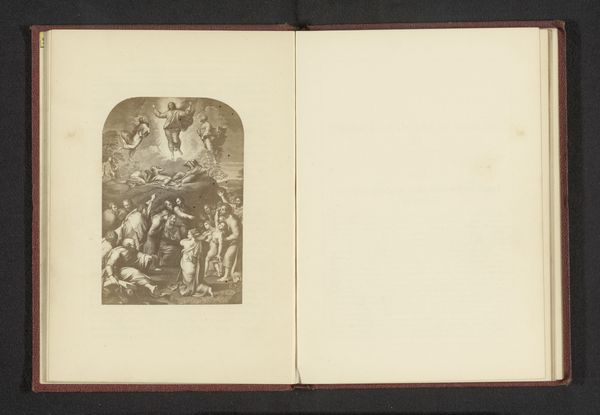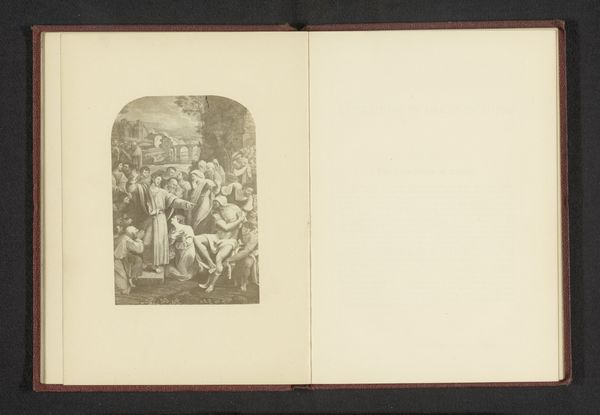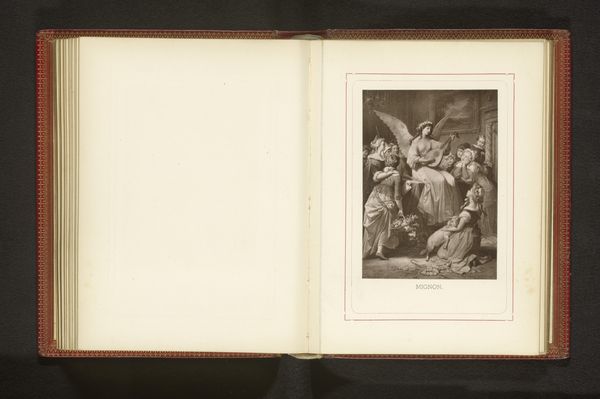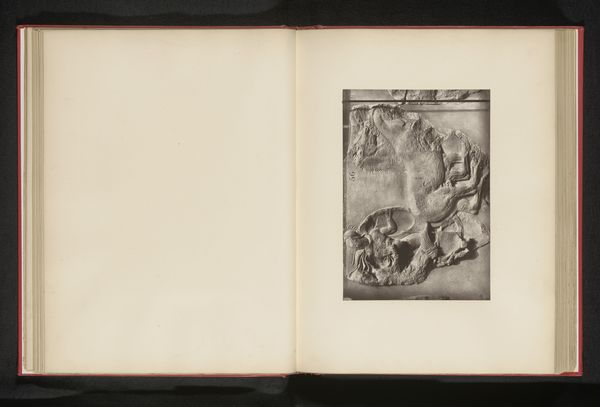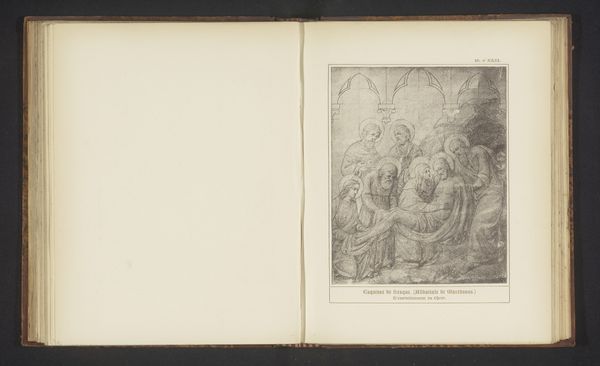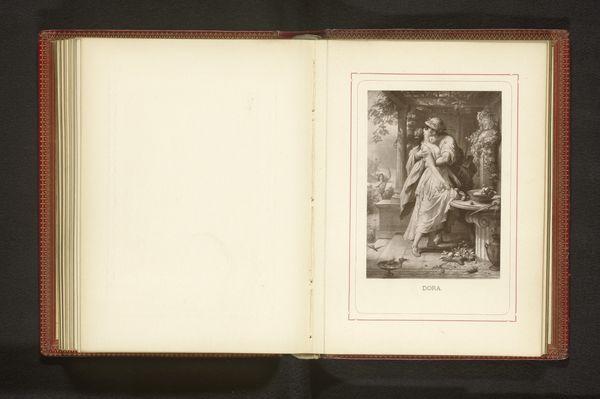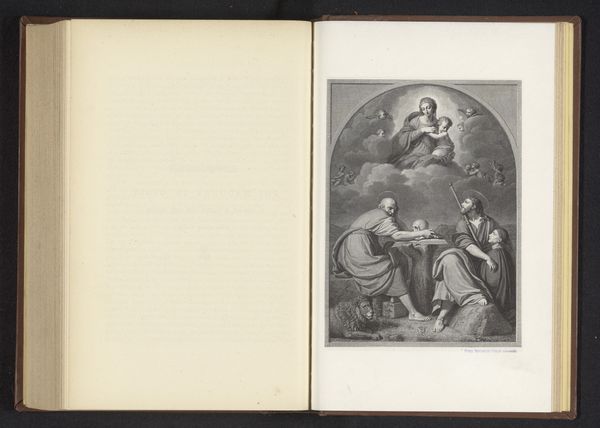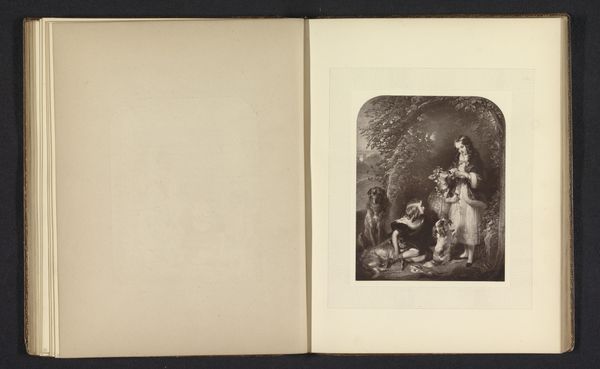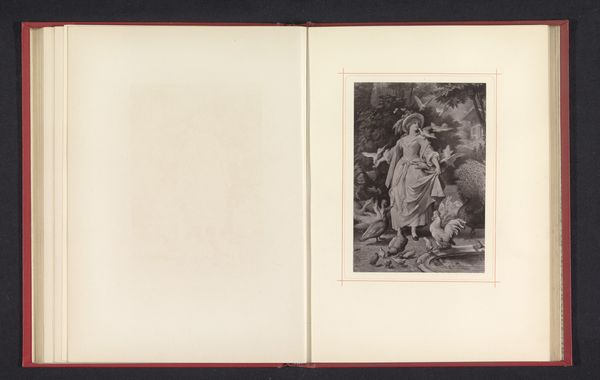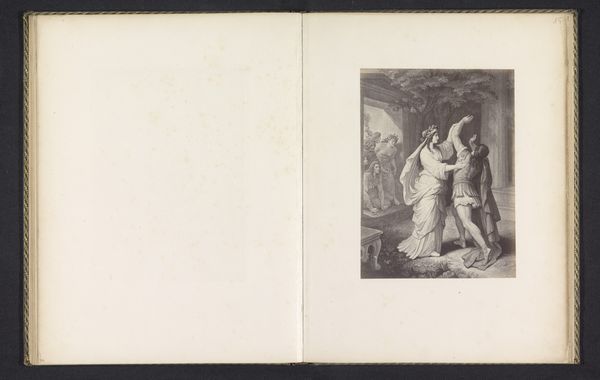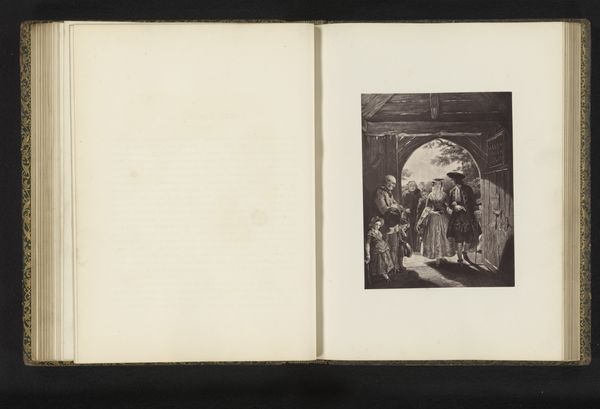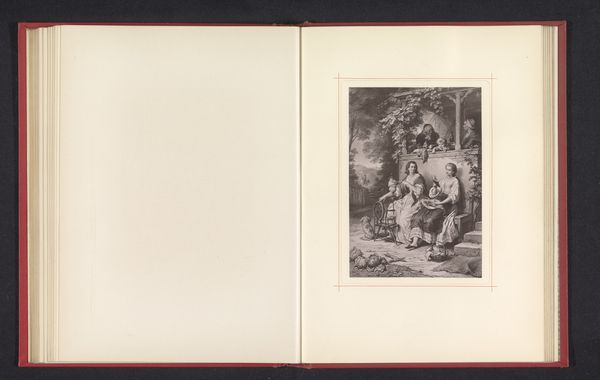
Fotoreproductie van een prent naar een schilderij, voorstellende Ecce Homo before 1863
0:00
0:00
print, etching, paper, engraving
#
portrait
#
aged paper
#
toned paper
#
homemade paper
#
paper non-digital material
#
paperlike
# print
#
etching
#
paper texture
#
paper
#
folded paper
#
history-painting
#
academic-art
#
letter paper
#
paper medium
#
design on paper
#
engraving
Dimensions: height 122 mm, width 86 mm
Copyright: Rijks Museum: Open Domain
Editor: This is a photographic reproduction of a print, titled "Ecce Homo," made before 1863, after a painting and attributed to Negretti & Zambra. It's an image of Christ in a moment of suffering; the composition feels very traditional. How would you approach analyzing this print? Curator: I see a print after a painting – a copy, inherently reproducible and disseminating an image widely. Consider the means of production: engraving, etching, photography. These are not neutral techniques. Each imprints a specific kind of labor. The shift from hand-rendered prints to photographic reproductions is crucial, indexing a change in how images are valued and consumed. Editor: That’s interesting, so it is not about what it represents but about the fact that is a reproduction? Curator: The "what" can’t be separated from the "how." This image circulated, not as a singular art object, but as a commodity, designed for mass consumption. Who was its intended audience? What social functions did images like these fulfill? These prints made religious art accessible. Was it for devotion, education, or mere decor? The texture of the paper, the quality of the print – these are clues to understanding its original market and purpose. Editor: So, analyzing the materials and the techniques involved helps to understand the broader context? Curator: Precisely. Consider the social and economic structures that enabled its production. Think about the labor of the engravers, the photographers, and the distributors who brought this image into homes and institutions. What does its existence as a copy tell us about originality and authorship in this period? Editor: This completely changes the way I see it. It’s not just a religious scene anymore; it's a document of 19th-century image-making and distribution. Thanks! Curator: Indeed! And it reminds us that even seemingly straightforward images are embedded in complex networks of production, consumption, and social meaning.
Comments
No comments
Be the first to comment and join the conversation on the ultimate creative platform.
